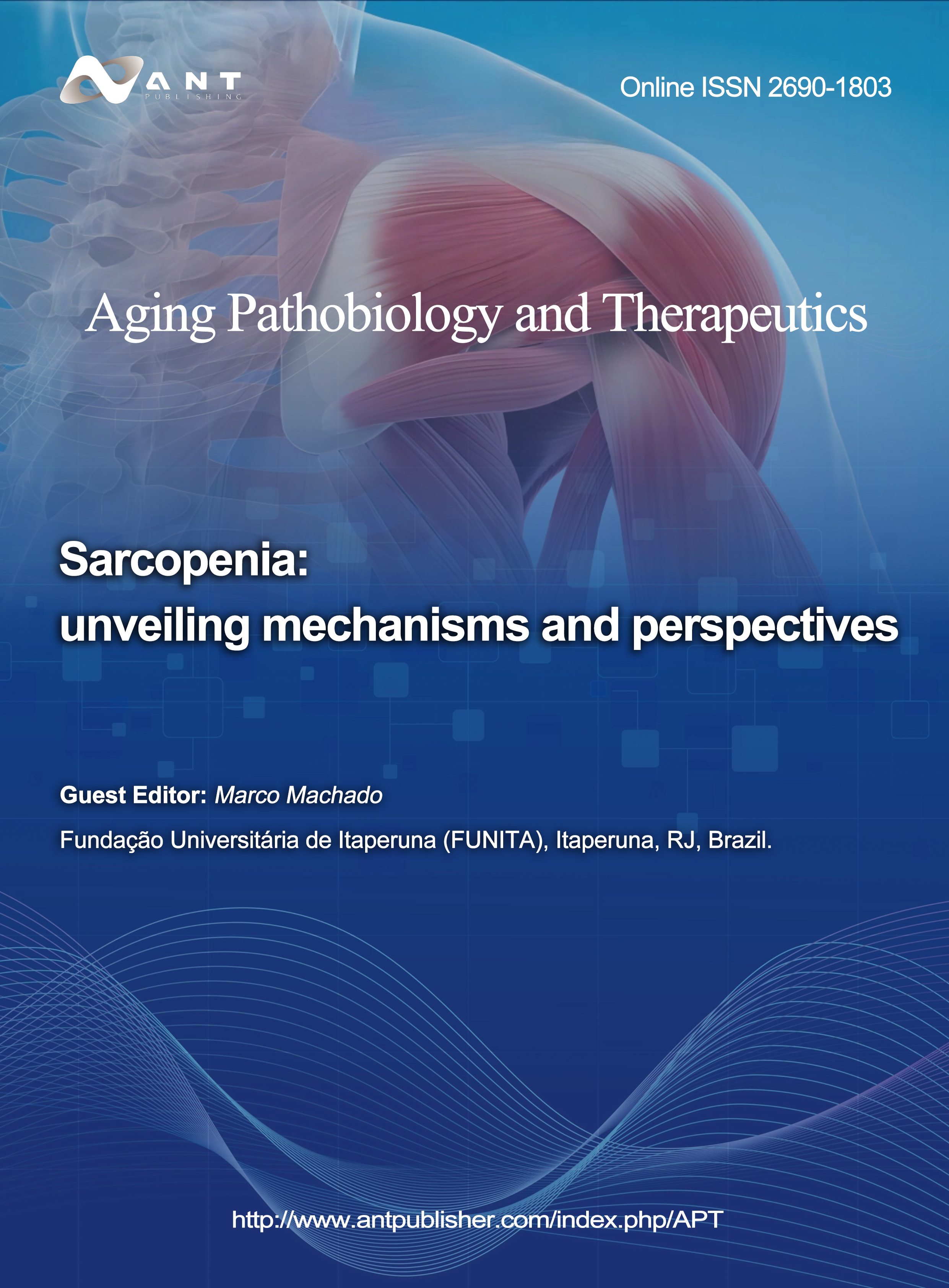Posted On 2023-11-24
 |
Guest Editor: Dr. Marco MachadoAssistant Professor, Fundação Universitária de Itaperuna (FUNITA), Itaperuna, RJ, Brazil.Email: marcomachado1@gmail.comWebsite: https://orcid.org/0000-0001-6364-6798 |
 |
Introduction
Sarcopenia, officially recognized as a disease by the World Health Organization (ICD-10M62.84) since 2016, is characterized by progressive muscle mass and strength loss, leading to adverse outcomes like falls, fractures, frailty, and increased mortality. Although prevalent in older individuals, muscle mass decline starts in one's 40s, decreasing by 1%–2% annually after age 50. The mechanisms behind sarcopenia are complex, involving neural decline, hormonal changes, reduced satellite cell function, malnutrition, chronic low-grade inflammation, mitochondrial dysfunction, and sedentary behavior. Establishing simple diagnostic criteria is challenging, with proposed definitions often considering muscle strength, mass, and gait speed. The 2019 European Working Group on Sarcopenia in Older People (EWGSOP2) guidelines prioritize low muscle strength, using grip strength as a central diagnostic factor, supported by evidence showing its better prediction of adverse outcomes than muscle mass. Diagnosis includes assessing muscle quality and quantity through methods like DXA, MRI mid-thigh imaging, or CT psoas muscle measurement. Physical performance is evaluated using the Timed Up and Go test or gait speed. Sarcopenia increases the risk of falls, impairs daily activities, and associated with heart disease, respiratory issues, cognitive impairment, and heightened hospitalization risk, incurring substantial economic costs. Treatment involves non-drug and drug-based interventions, but a consensus on a specific drug is lacking. Muscles are recognized as endocrine organs, releasing myokines influencing neurons, adipocytes, leukocytes, and hepatocytes. Muscle mass decline disrupts the neuro-immuno-endocrine balance, resulting in chronic low-grade inflammation, diminished neurogenesis, and decreased anti-inflammatory factor synthesis. Lifestyle interventions, such as regular exercise and a balanced diet, are crucial for managing sarcopenia, contributing not only to muscular hypertrophy but also to maintaining skeletal system metabolic equilibrium. In some cases, hormone administration augments muscle mass.
Prof. Marco Machado
Guest Editor
Manuscript Submission Information
Manuscripts should be submitted online at www.antpublisher.com through the online submission system. Once you are registered, click here to go to the submission form. Manuscripts can be submitted until the deadline. All papers will be peer-reviewed. Accepted papers will be published continuously in the journal (as soon as accepted) and will be listed together on the special issue website. Research articles, Review articles as well as Therapeutic Brief are invited. For planned papers, a title and short abstract (about 100 words) can be sent to the Editorial Office for announcement on this website.
Submitted manuscripts should not have been published previously, nor be under consideration for publication elsewhere (except conference proceedings papers). All manuscripts are thoroughly refereed through a single-blind peer-review process. A guide for authors and other relevant information for submission of manuscripts is available on the Instructions for Authors page. APT is an international peer-reviewed open access quarterly journal published by ANT.
Please visit the Instructions for Authors page before submitting a manuscript. Considering limited grants for some researchers, Dr. Marco Machado and the editorial office made the decision that Article Processing Charges will be fully exempted, which means that there is NOT any manuscript processing or publication fees for your article once accepted after standard peer-review.
Submission Deadline
December 31, 2024
Participants
Contacts
Alan Zhou, Assistant Editor, apt_alanzhou@antpublisher.com
Updated on Nov 24, 2023